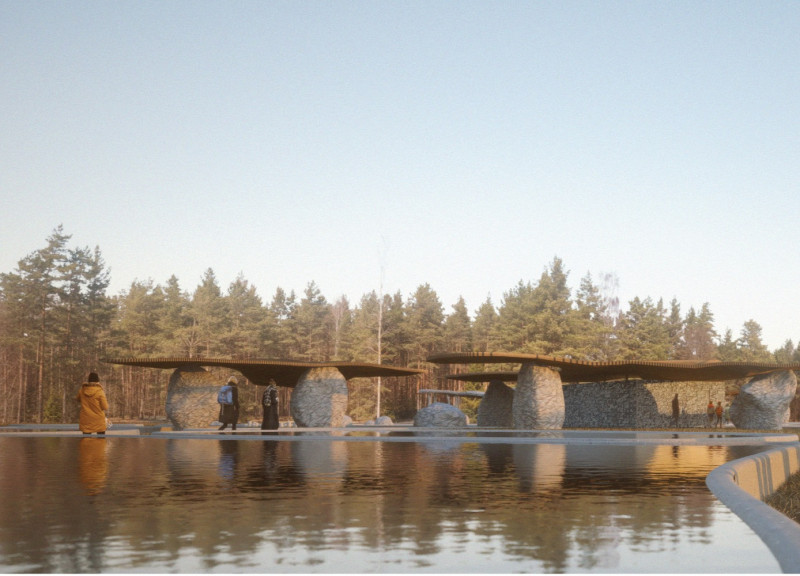5 key facts about this project
The Great Kemeri Bog Visitors Center is located in an untouched natural area, serving as a point of entry for visitors to explore the rich ecosystems of the Great Kemeri Bog. The design includes eight pavilions arranged among dark pools, creating a strong link between the buildings and the landscape. The concept focuses on encouraging exploration, guiding visitors through the site, and offering various vantage points to appreciate the surrounding nature.
Materiality
The pavilions use a mix of wood and stone. They can feature wooden canopies supported by stone columns or vice versa, establishing a relationship between the two materials. This choice promotes a connection to the landscape while ensuring stability and visual consistency.
Sustainable Sourcing
Sustainability plays a key role in the design, primarily through the use of materials that are found on-site. Fallen tree trunks and large boulders will be employed as structural elements, while smaller stones will make up gabions. Reclaimed wood will form slatted canopies, further supporting environmentally responsible building practices that align with the local ecology.
Innovative Integration
The construction will be enhanced by modern technology, which will create a digital database of found materials using 3D scanning. This allows for an "approximate fit" method, enabling adaptation based on what is available. Such an approach lets the center’s elements grow and change over time, reflecting the influences of nature while providing a distinctive look that shifts throughout the seasons.
One interesting detail is how the canopies are intended to become covered with ivy, and the stones will gradually grow moss. This design choice allows the structure to blend into the landscape over time, creating a connection with nature that evolves continuously.



























